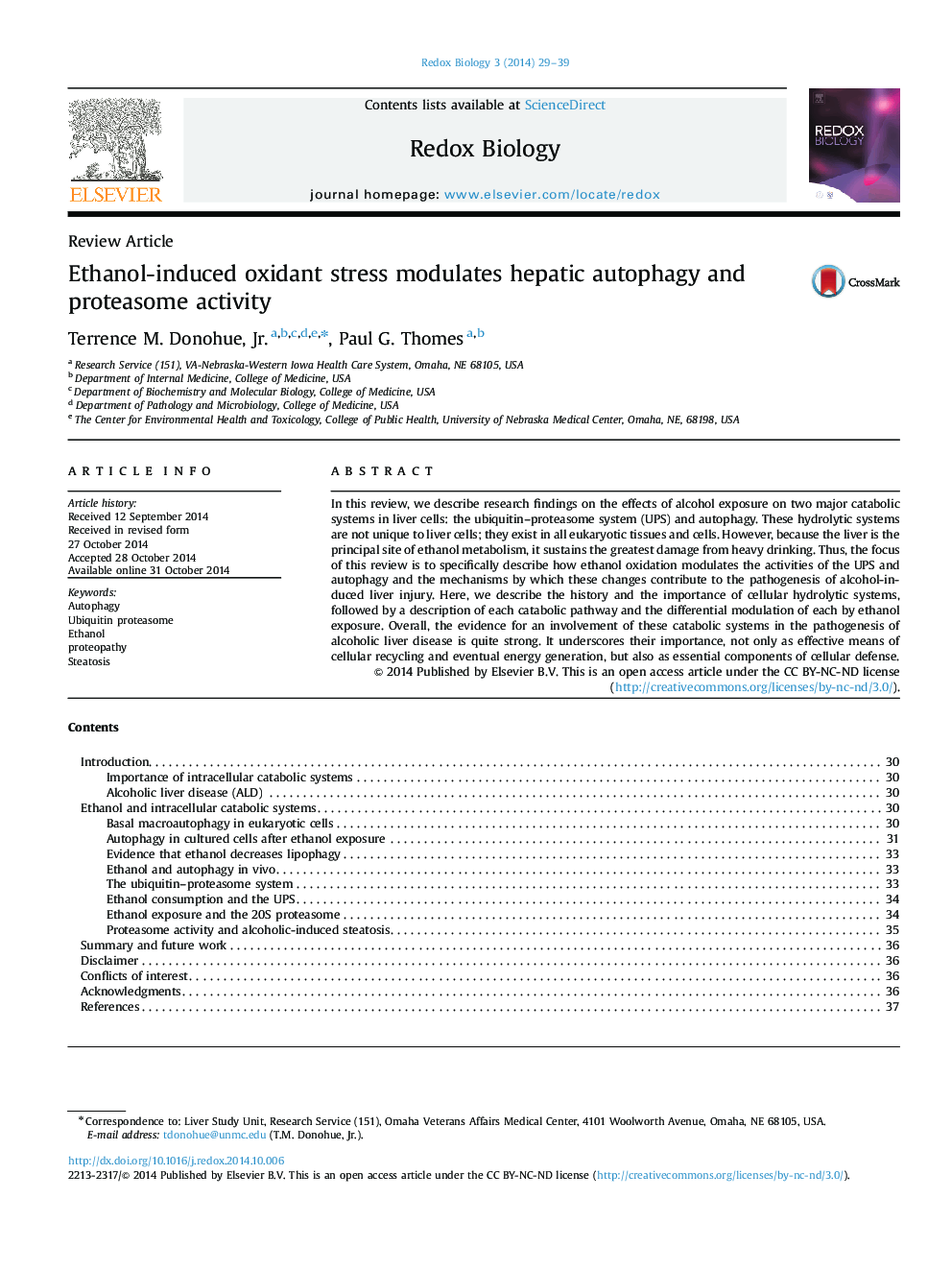| کد مقاله | کد نشریه | سال انتشار | مقاله انگلیسی | نسخه تمام متن |
|---|---|---|---|---|
| 1923109 | 1535847 | 2014 | 11 صفحه PDF | دانلود رایگان |
• Active intracellular catabolic systems are crucial to cell survival.
• Autophagy and the ubiquitin–proteasome system (UPS) are predominant catabolic systems.
• Alcohol oxidation to acetaldehyde modulates autophagy and the UPS in liver.
• Continuous (chronic) ethanol oxidation disrupts hepatic autophagy and the UPS.
• Such disruption contributes to alcoholic liver injury.
In this review, we describe research findings on the effects of alcohol exposure on two major catabolic systems in liver cells: the ubiquitin–proteasome system (UPS) and autophagy. These hydrolytic systems are not unique to liver cells; they exist in all eukaryotic tissues and cells. However, because the liver is the principal site of ethanol metabolism, it sustains the greatest damage from heavy drinking. Thus, the focus of this review is to specifically describe how ethanol oxidation modulates the activities of the UPS and autophagy and the mechanisms by which these changes contribute to the pathogenesis of alcohol-induced liver injury. Here, we describe the history and the importance of cellular hydrolytic systems, followed by a description of each catabolic pathway and the differential modulation of each by ethanol exposure. Overall, the evidence for an involvement of these catabolic systems in the pathogenesis of alcoholic liver disease is quite strong. It underscores their importance, not only as effective means of cellular recycling and eventual energy generation, but also as essential components of cellular defense.
Figure optionsDownload as PowerPoint slide
Journal: Redox Biology - Volume 3, 2014, Pages 29–39
